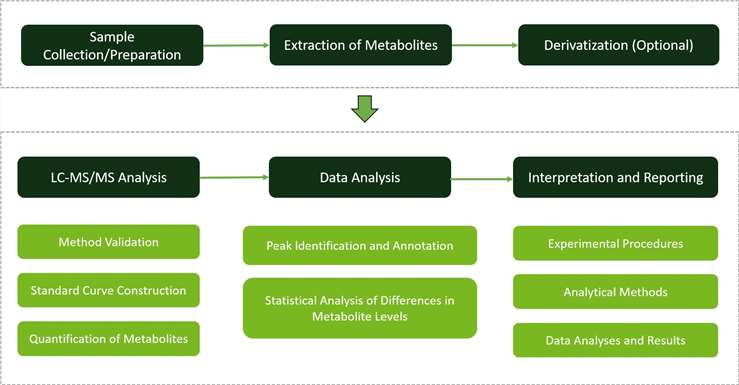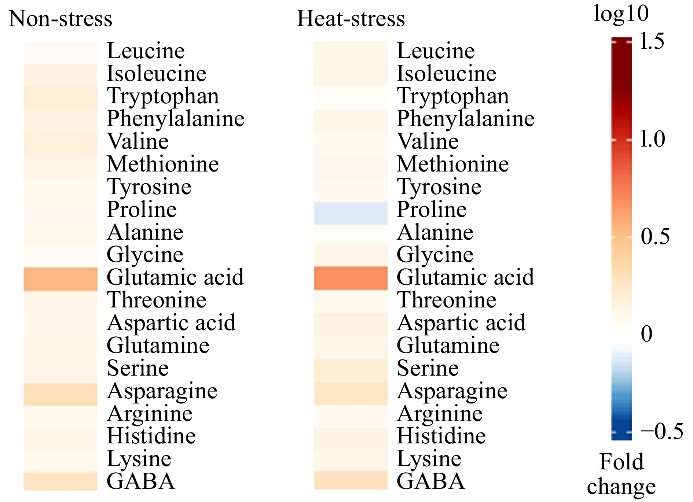What is Glutamate Metabolism?
Glutamate, prominently known as L-glutamic acid (L-Glu), serves as a central player in amino acid metabolism within the plant kingdom. As a prevalent amino acid in plants, L-Glu serves multiple crucial functions, including participating in amino acid metabolism, facilitating ammonia assimilation, and contributing to the biosynthesis of key amino acids involved in stress resistance. Moreover, L-Glu acts as a signaling molecule, modulating various growth and developmental processes such as seed germination, root growth, and photosynthesis, while also playing a role in pathogen resistance and response to environmental stresses.
Understanding the metabolism and signaling pathways of L-Glu in plants holds significant implications for enhancing the yield and resilience of food crops. By elucidating the synthesis, metabolism, and biological functions of L-Glu, researchers can gain insights into mechanisms for mitigating adversity stress in plants. By harnessing advanced metabolomics technologies and specialized expertise, Creative Proteomics empowers researchers to unravel the complexities of glutamate metabolism and its role in plant physiology and stress responses.
Glutamate Metabolism Analysis Service by Creative Proteomics
Glutamate Metabolism Metabolite Profiling: Within Creative Proteomics, our diverse range of services encompasses thorough metabolite profiling, delivering comprehensive quantitative analyses of glutamate and its derivatives across a variety of plant specimens. Employing cutting-edge analytical platforms, we facilitate high-throughput screening of metabolites, allowing for precise identification of biomarkers and metabolic pathways associated with glutamate metabolism.
Glutamate Metabolism Pathway Analysis: Creative Proteomics conducts detailed pathway analyses to elucidate the metabolic networks involving glutamate within plants. Through integrative data interpretation and bioinformatics analyses, we unveil the intricate relationships between glutamate metabolism and physiological traits, offering valuable insights into plant growth, development, and responses to stress.
Stress Response Studies: Our specialized services extend to investigating the role of glutamate in plant stress responses. By examining fluctuations in glutamate levels and related metabolites under diverse stress conditions, we elucidate the adaptive mechanisms employed by plants to navigate environmental challenges. This knowledge contributes to the development of strategies aimed at enhancing stress tolerance in crops.
Techniques and Instrumentation for Glutamate Metabolism Analysis
Liquid Chromatography (LC): Liquid chromatography (LC) serves as a cornerstone technique in Creative Proteomics's Glutamate Metabolism Analysis Service, enabling the separation and purification of glutamate and its metabolites prior to mass spectrometry analysis. Our LC systems (Vanquish H) offer superior chromatographic resolution and efficiency, facilitating the precise quantification and identification of target analytes in complex biological samples. Through customized chromatographic conditions, we optimize the separation of target analytes from interfering compounds, ensuring accurate and reliable results.
Mass Spectrometry (MS): Mass spectrometry (MS) plays a pivotal role in detecting and quantifying glutamate and its metabolites with unparalleled sensitivity and specificity. At Creative Proteomics, we utilize high-resolution MS platforms such as the QE and Thermo Q-Exactive instruments to achieve optimal detection performance. These instruments offer exceptional mass accuracy and resolution, enabling the precise characterization and quantification of glutamate-related compounds in diverse plant samples.
LC-MS/MS Method Establishment and Optimization: Creative Proteomics employs LC-MS/MS methods for targeted quantification of glutamate and its metabolites. Our approach involves two critical aspects:
1) Standard Curve
We establish standard curves using reference standards of glutamate and related compounds, allowing for the quantitative determination of target analytes in biological samples. Through meticulous calibration procedures, we ensure the linearity, accuracy, and reproducibility of standard curves, facilitating precise quantification of glutamate metabolites across a wide concentration range.
2) Multiple Reaction Monitoring (MRM) Quantification
Creative Proteomics implements MRM quantification for targeted analysis of glutamate and its derivatives. By selecting appropriate precursor and product ion pairs for each metabolite, we optimize MRM transitions to maximize detection efficiency and minimize interference from background noise.
 Workflow of Glutamate Metabolism Analysis Service
Workflow of Glutamate Metabolism Analysis Service
Why Choose Us?
- Precision and Sensitivity:Creative Proteomics's targeted metabolomics study ensures precise and sensitive detection of glutamate and its derivatives, facilitating accurate quantification and identification of metabolites even in complex biological samples.
- Comprehensive Coverage:We cover a wide range of plant tissues and sample types, including roots, stems, leaves, fruits, and seeds, ensuring comprehensive analysis of glutamate metabolism across various developmental stages and environmental conditions.
- Personalized Sample Processing:Creative Proteomics provide personalized sample extraction protocols tailored to different plant species and sample matrices, ensuring optimal extraction efficiency and reproducibility.
- Robust Quality Control Measures:We implement stringent quality control measures and multi-internal standard controls, to ensure the reliability and accuracy of our data.
- Advanced Data Analysis Tools:Our data analysis service includes powerful data analysis tools such as Progenesis QI software and a dedicated plant metabolomics cloud platform, enabling efficient data mining and visualization for comprehensive interpretation of results.
Applications of Glutamate Metabolism Analysis
Understanding Plant Physiology: Through the study of glutamate metabolism dynamics, researchers delve into the intricacies of fundamental physiological processes such as seed germination, root development, photosynthesis, and responses to stress factors.
Enhancing Crop Resilience: Insights garnered from the analysis of glutamate metabolism guide the formulation of strategies aimed at bolstering crop resilience against both biotic and abiotic stresses, spanning pathogens, drought, salinity, and fluctuations in temperature.
Developing Novel Therapeutics: Investigations into glutamate metabolism within medicinal plants shed light on the biosynthesis pathways of bioactive compounds, holding promise for novel therapeutic applications in human health and disease management.
Optimizing Agricultural Practices: A comprehensive understanding of the metabolic pathways associated with glutamate metabolism paves the way for the optimization of agricultural practices, aiming to augment crop yield, improve quality, and enhance nutritional value.
Sample Requirements for Glutamate Metabolism Assay
| Plant Sample Type |
Minimum Quantity Required (fresh weight) |
Storage Conditions |
Additional Notes |
| Roots,Stems,Leaves,Fruits |
>200 mg |
Quick freeze in liquid nitrogen, Store at -80°C |
- |
| Seeds |
>200 mg |
Include seeds if applicable |
Each experimental treatment should have more than 6 biological replicates to ensure
robust statistical analysis and reliable interpretation of results.
For other sample types not listed above, such as flowers or whole plants, please consult our technical support or sales team for specific requirements and recommendations.
Case 1. Exogenous Glutamate Modulates Chlorophyll Degradation and Amino Acid Metabolism under Heat Stress in Creeping Bentgrass
Background:
The article revolves around elucidating the role of glutamate metabolism in mitigating heat-induced leaf senescence in cool-season plants, particularly creeping bentgrass.
It addresses how heat stress disrupts plant metabolism, leading to accelerated leaf senescence characterized by chlorophyll degradation and altered amino acid metabolism.
Samples:
Sod plugs of creeping bentgrass (cv. 'Penncross') was chosen due to its relevance in turfgrass research and its adaptability to various environmental conditions.
The selected sod plugs were transplanted into polyvinyl chloride pipes filled with sterilized fritted clay.
Plants underwent a 28-day acclimation period in the greenhouse, with controlled temperature and lighting times, and regular maintenance.
Technical methods procedure:
Glutamate was foliar-sprayed onto plants to examine its effects under both stress and non-stress conditions. Physiological measurements included turf quality, leaf photochemical efficiency, and Chl content.
Enzymatic activities of Chl-synthesizing and -degrading enzymes were quantified, along with free amino acid content using ultra-high-performance liquid chromatography-tandem mass spectrometry.
Statistical analysis was performed using SAS version 9.2, with a two-way ANOVA test and Fisher's LSD test used for comparisons.
Results
Glutamate treatment was found to preserve turf quality, chlorophyll content, and photochemical efficiency under heat stress, suggesting its potential as a repressor of leaf senescence.
Glutamate primarily suppressed chlorophyll degradation enzymes without affecting chlorophyll synthesis, indicating its role in preserving chlorophyll levels. Additionally, glutamate treatment resulted in the upregulation of various amino acids, particularly under heat stress, suggesting its involvement in amino acid metabolism for energy production, antioxidant defense, and nitrogen balance.
 Heat map illustrating the general trend of fold-changes in the content of various amino acids inresponse to glutamate treatment in creeping bentgrass under non-stress or heat stress temperatureconditions.
Heat map illustrating the general trend of fold-changes in the content of various amino acids inresponse to glutamate treatment in creeping bentgrass under non-stress or heat stress temperatureconditions.
Reference
- Rossi, S. (2021). "Glutamate acts as a repressor for heat-induced leaf senescence involving chlorophyll degradation and amino acid metabolism in creeping bentgrass. " Grass Research 1(1), 1-10.


 Workflow of Glutamate Metabolism Analysis Service
Workflow of Glutamate Metabolism Analysis Service Heat map illustrating the general trend of fold-changes in the content of various amino acids inresponse to glutamate treatment in creeping bentgrass under non-stress or heat stress temperatureconditions.
Heat map illustrating the general trend of fold-changes in the content of various amino acids inresponse to glutamate treatment in creeping bentgrass under non-stress or heat stress temperatureconditions.

